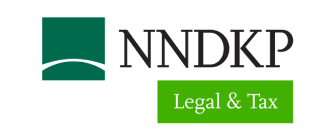Artificial Intelligence (AI) has emerged as a transformative force across various industries, revolutionizing the way we work, communicate, and interact with technology. AI technologies develop very fast bringing challenges, particularly in the field of intellectual property (IP) rights.
We encounter various issues, from the ownership of the IP rights and their protection to the ethical considerations concerning AI-generated content. When interacting with AI and IP, careful and innovative solutions must be implemented, since one of the challenging aspects of this technological advance is its impact on IP.
Nowadays, AI can create almost everything, from music, art, essays, novels, digital content, digital books, pictures, to even fully developed applications for mindfulness, with incredible accuracy, quality and even originality, raising various questions from an IP perspective such as: who is the owner of the IP? The “robot” or the “human” who created or ordered the “robot”? How can I protect the content that AI creates for me?
Thus, the creation of works by AI has important implications for copyright. The legislation in force currently provides that the works are protected by copyright if they are original. In this respect, CJEU stated (Case C-5/08, Infopaq International) that copyright only applies to original works and that originality must reflect the author's "own intellectual creation". This has to be interpreted in the sense that an original work must reflect the work of the human author, which clearly implies that there must be a human who creates the work which is eligible to be protected by copyright or by any other IP right.
However, the latest AI systems have evolved so much that many of their decisions or creative processes are provided without human intervention.
As an example, AI fully generated works such as “The Next Rembrandt”1 project where AI produces brand-new paintings replicating the artist’s subject matter and style, or “Portrait of Edmond Belamy”, one of a group of portraits of the fictional Belamy family created by AI. Emily Howell or Bot Dylan, computer programs that compose music, or an AI-written novel “The Day A Computer Writes A Novel” are other examples. Just in theory such works can be deemed free of copyright since they are not created by humans.
In this context, it becomes mandatory for companies/employers to regulate in agreements the use of AI and give proper trainings to their employees/collaborators/contractors when using AI. There already have been cases when Samsung2 employees accidentally leaked trade secrets via ChatGPT. According to online sources3, Samsung employees unintentionally leaked sensitive information to ChatGPT in the following separate cases: (i) an employee pasted confidential source code into the chat to check for errors, (ii) another employee shared code with ChatGPT and "requested code optimization" and (iii) a third, shared a recording of a meeting to convert into notes for a presentation. That information is now in ChatGPT’s possession and can be freely used by it.
The use of AI can also generate content that infringes on third parties’ IP rights. When AI is used, as far as the impact over IP rights (e.g. copyrights, trademarks, designs, trade secrets) is concerned, among others whether such would belong to the right holder or to other parties, we find it recommendable for companies developing IP copyrightable works to include in their internal policies and/or other binding documents:
- guidelines and principles to clearly provide for and establish the subject matter and the limits in relation to AI data used for the work resulting from the use of such technology;
- provisions indicating the intellectual property rights which will result from the use of AI; and
- provisions establishing the ownership over such IP rights; and
- for the employer/company to clearly establish the limits of data scraping which can be made by the employee / collaborator, when performing their activities.
Even in the case of employees of collaborators/contractors, both parties should take firm steps to protect their IP portfolios and to ensure proper solutions for their enforcement. These steps may include the verification of their work in online sources, including visual elements such as logos, pictures or paintings. Since such verification is almost impossible to be done manually through terabytes of content data, a cost-effective automation of this task could be taken into consideration.
To conclude, for the future we expect to see a fulminant development of AI since things are likely to become more complex as machines are getting better at producing creative works and innovative works, and the use of AI all around the world is becoming more and more widespread.
1 https://www.wipo.int/wipo_magazine/en/2017/05/article_0003.html


